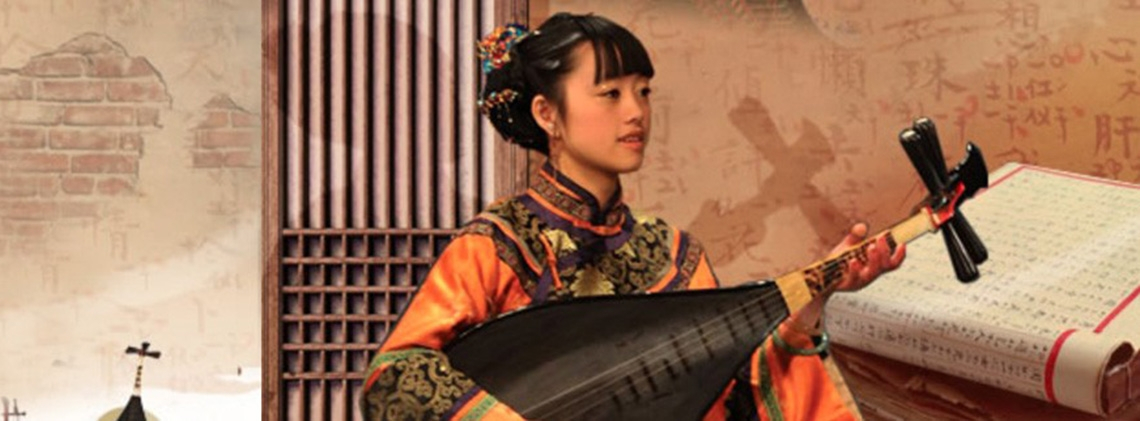
Nanyin-Southern Music
Splendid
Chi Culture
Topic
Nanyin-Southern Music
The thousand-year old nanyin or Southern music is regarded as a “living fossil” in the history of Chinese music. Because of its longevity and wide dissemination, nanyin has had different names in different historical eras and regions. Nevertheless, it is generally referred to as “string and pipe music” on account of its primary instruments. People who share an interest in the music call themselves “string friends.” In 2009, nanyin was formally inscribed on the Intangible Cultural Heritage List by the United Nations Educational, Scientific and Cultural Organization.
There are more than two thousand pieces, both vocal and instrumental, in the nanyin repertoire, each of which can be categorized into three styles: zhitao (finger notation, vocal suites), sanqu (individual tunes ), and dapu (grand score or instrumental suites) abbreviated as zhi, pu, and qu. Nanyin uses a five-tone scale represented by the five Chinese characters: yì, gong, liu, si, and yī. This pentatonic scale corresponds to the five-tone scale of the pre-Qin era (times before 221 BCE): gong, shang, jue, zhi, and yu.
Nanyin traditionally was performed in the Quanzhou dialect, a southern Min dialect that, like the music, is considered by linguists to be a “living fossil” of ancient spoken Chinese. The pronunciations of ancient words have been preserved through the tradition of passing-down the songs and using the ancient pronunciation in these “string and pipe” operas. The old masters would either teach the ancient pronunciation to their disciples directly, or they would use homophonic characters to indicate the ancient pronunciation or rhymes in the hand-copied script or block-printed edition. However, it is hard to clearly identify how much ancient spoken Chinese has actually been preserved in the Quanzhou dialect.
Major musical instruments of nanyin include the pipa (a four-stringed, lute-like instrument), dongxiao (vertical flute), erxian (a two-stringed instrument), and paiban (clappers). These instruments are holdovers from Tang dynasty music. Nanyin is most commonly performed by a team of five musicians: the singer plays the clappers while singing and accompanied by the other instruments. In other words, the players of pipa and sanxian (a three-stringed vertical instrument) sit on the right, the players of the panpipe and erxian sit on the left. The singer holding the clappers sits in the middle. Music historians believe that this is the same as the Han dynasty manner of performing songs with accompaniment. It is a historical relic of southern music found in Quanzhou. The choice of performing venues is flexible: performances can take place in halls, leisure rooms, courtyards, in front of the palace, or inside temples. Once a few string-musicians get together, they can perform wherever they please, and find pleasure in it.
Music historians at the Chinese National Academy of Arts use four words to describe the unique features of nanyin: ancient, abundant, extensive, and strong. With respect to “ancient,” the nanyin of Quanzhou is of great antiquity. The music was influenced by xianghe ge (lyrics for accompanied songs) from the Han, qingshangmusic of the Jin, and daqu of the Tang and Song, as well as yanyue (court banquet music). It also retains features of nanxi (southern drama). In terms of abundance, nanyin is an ancient musical genre, and in Quanzhou, more than 2,000 pieces of the music are preserved that are rarely seen in other places. Nanyin’s geographical spread is extensive; although nanyin is sung in dialect, performances are not limited to its native region or home village. Nanyin has spread to Taiwan, Hong Kong, Macao, and Southeast Asia where southern Min (Fujian) expatriates reside. In terms of strength, nanyin’s vitality is strong and powerful. Through thousands of years of ups and downs, nanyin has not only preserved a large repertoire, but a large number of the melodies are performed throughout the China and the world. Some have considered it a miracle in music history.
Music has always been closely related with religion. Nanyin is no exception. In Quanzhou, nanyin maintains a relationship with both Buddhism and Daoism. With deep roots, cultivated over a long time, in southern Fujian province, nanyin is closely linked to the daily life of the ordinary people. In addition to opera troupes performing on some public holidays, such as the Buddha’s birthday and the pusi (offering sacrifice to all wondering ghosts) event, “string and pipe music” such as nanyin is also played to liven up the celebration.
Nanyin continues to receive increasing attention, and even enjoys an important cultural status in some places. Quanzhou, Xiamen, Taiwan, and Singapore have all been influenced by nanyin. Of all these places, Quanzhou, as the birthplace of nanyin, is the most important.
Soon after the People’s Republic of China was established, the authorities paid special attention to this music. As a result of the Chinese government implementing the Intangible Cultural Heritage Protection System, nanyin has received added protection.



